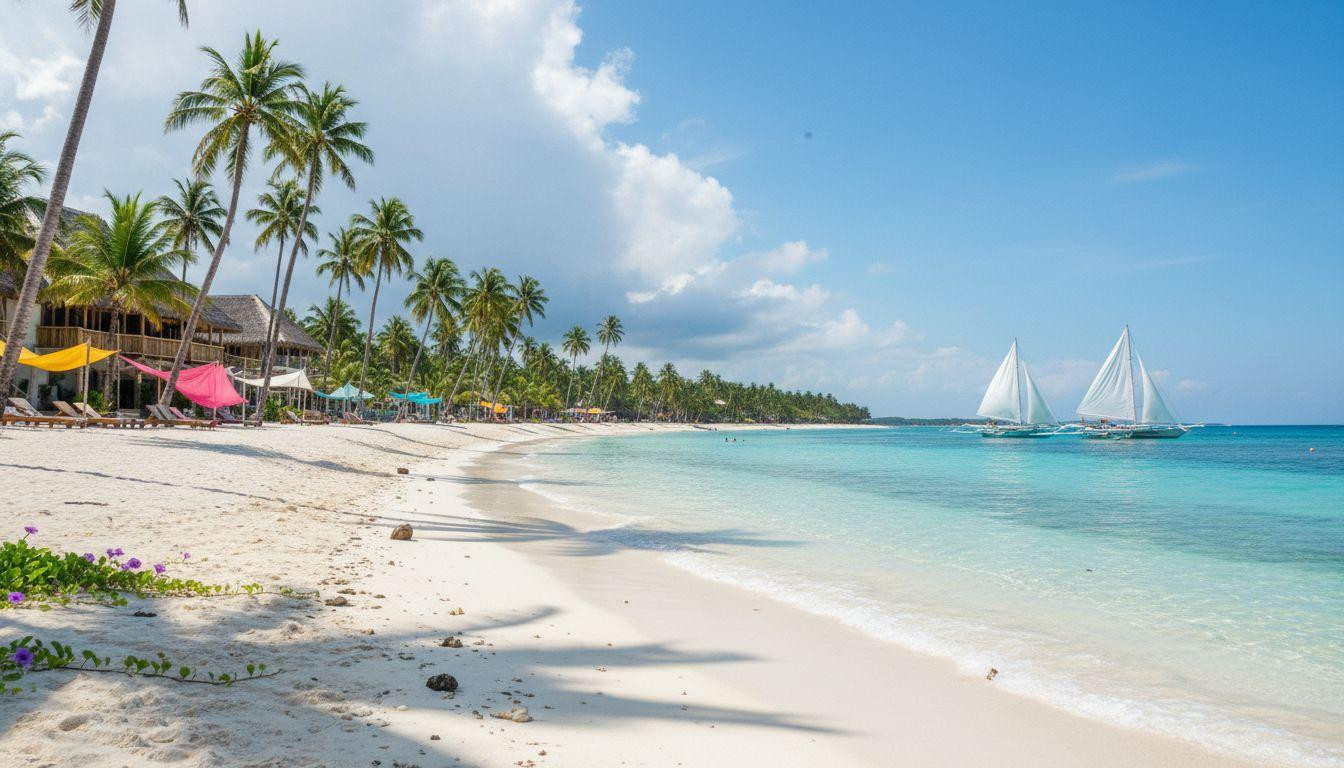April 26, 2018 marked a moment that stunned the travel world. The Philippine government closed Boracay Island, calling it a cesspool and banning all tourists for six months. International headlines declared tourism disaster. Yet when the island reopened in October 2018, visitors discovered something unexpected: beaches cleaner and more beautiful than anyone remembered in decades.
The beach that broke under pressure
Before 2018, Boracay’s 4-mile White Beach hosted up to 19,215 people daily. The island’s infrastructure couldn’t handle the crowds. Raw sewage flowed directly into turquoise waters where tourists swam.
Illegal construction covered beach zones. Hotels dumped wastewater into the ocean without treatment. The famous powdery sand turned gray from pollution. What once symbolized tropical paradise became an environmental disaster zone.
President Duterte’s dramatic closure sent shockwaves through Southeast Asian tourism. The island that welcomed one-third of the Philippines’ visitors suddenly stood empty. Six hundred businesses shut down overnight.
Six months that changed everything
What closure looked like
Empty beaches stretched for miles without footprints. Construction crews demolished 81% of buildings in protected beach zones. Two illegally occupied wetlands were cleared and restored to natural conditions.
Workers installed new sewage treatment facilities across the island. The advanced Membrane Bioreactor system replaced failed infrastructure that had poisoned the water for years. Nearby Coron’s pristine lagoons offered a glimpse of what Boracay could become again.
The invisible environmental healing
Beneath the surface, dramatic changes occurred. Fecal coliform levels dropped to acceptable limits for the first time in decades. Green algae tides caused by sewage pollution disappeared from shorelines.
Marine life returned to areas previously too polluted for survival. Water clarity improved as treatment facilities processed waste properly. The rehabilitation proved that decisive environmental action produces measurable results.
The island you visit now
Rules that actually work
Today’s Boracay operates under strict visitor caps of 6,405 tourists daily, though enforcement varies during peak season. Smoking and drinking are banned on all beaches. E-tricycles replaced gasoline vehicles, reducing air and noise pollution significantly.
Single-use plastics face island-wide prohibition. Hotels must meet environmental accreditation standards before reopening. The regulations that seemed extreme in 2018 now feel like common sense. Similar conservation models protect wilderness areas worldwide through strict visitor management.
What traveling here feels like
Stepping onto White Beach today reveals sand that feels genuinely powdery again. Water runs clear enough for safe swimming year-round. Sunset viewing happens without shoulder-to-shoulder crowding.
Hotels charge $60-150 nightly for mid-range accommodations, below pre-closure luxury pricing. Fresh seafood costs $15-30 per meal. The $5.40 environmental fee seems reasonable for preserving this transformation.
Visitors notice the difference immediately. Beach regulations prevent the chaos that once defined peak season. The balance between tourism and preservation actually works in practice.
Why this matters beyond Boracay
While Venice debates tourist taxes and Santorini drowns in cruise ship crowds, Boracay proved radical environmental action succeeds. The island became a model for sustainable tourism across the Philippines.
Similar rehabilitation programs launched for Manila Bay, El Nido, Panglao, and Siargao. Destinations worldwide study Boracay’s transformation as proof that tourism doesn’t have to destroy what makes places worth visiting.
The success lies in comprehensive infrastructure investment, not just visitor limits. Sewage treatment, transportation changes, and building regulations address root causes rather than symptoms. Seven years later, the model continues working.
Your questions about Boracay’s transformation answered
How much does visiting cost now?
Mid-range hotels average $60-150 per night, significantly lower than pre-closure luxury rates. Environmental fees cost $5.40 per person. Restaurant meals range $15-30 for fresh seafood. Island hopping tours cost $20-40, while diving experiences range $50-100.
When should you visit for the best experience?
November through May offers optimal weather with temperatures reaching 86-90°F. December to April brings higher visitor numbers but remains manageable under current caps. Avoid June through October due to typhoon season and increased rainfall.
Is the water quality really safer now?
Government testing confirms fecal coliform levels stay within acceptable limits since 2022. Boracay Water’s new facilities connect 7,329 households and businesses to proper sewage treatment. Cleaner alternatives exist, but Boracay’s beaches remain safe for swimming year-round except during natural algae blooms.
Morning light illuminates White Beach’s restored coastline. Gentle waves meet sand that sparkles white again. The island that closed as a disaster reopened as proof that environmental redemption works when governments choose preservation over profit.
